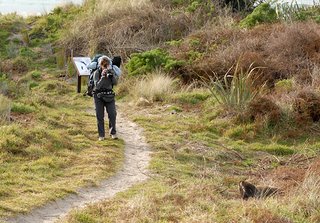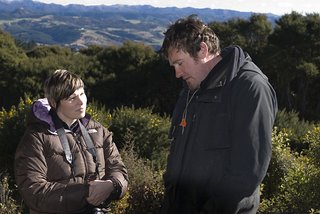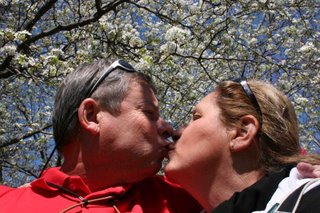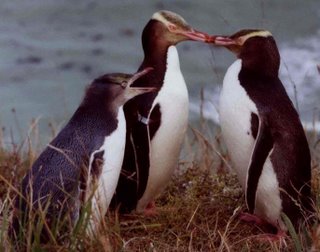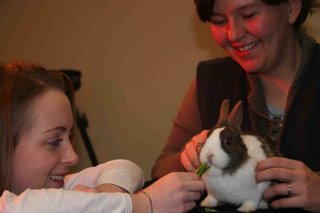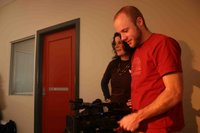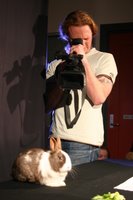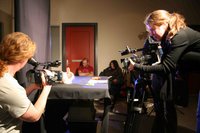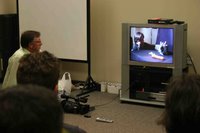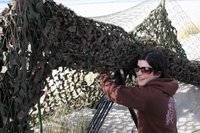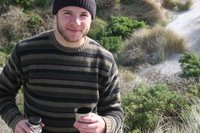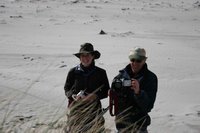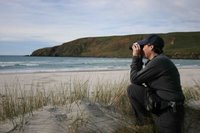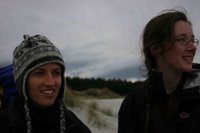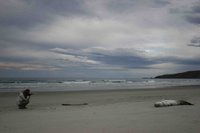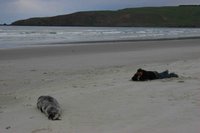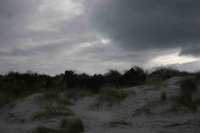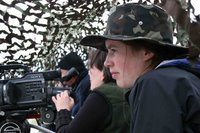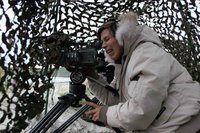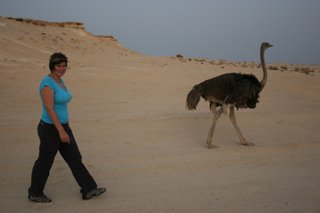Pitching Tips from AIVF
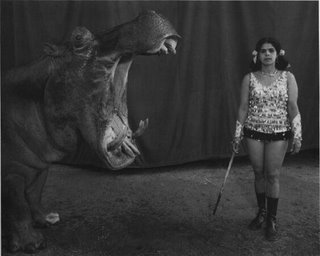 A circus hippo and its trainer from the Great Rayman Circus of India. I bet they know a thing or two about pitching.
A circus hippo and its trainer from the Great Rayman Circus of India. I bet they know a thing or two about pitching.Next Tuesday we have to pitch our project ideas for films...I found this helpful.
Pitching Your Best Foot Forward (more here)
The Pitch
Most AIVF (Association of Independent Video and Film) producers who pitch have a strong hook, and their pitches prove their research is very thorough. However, describing actual style and approach proves more difficult for most producers. A good pitch clearly demonstrates your vision of how your story will evolve in real time. It also states why your project is best suited for film/video as opposed to a photo essay or printed article.
Be clear about:
- the story. stick to WHAT HAPPENS, where the story goes. Get to the conflict, the drama. Basically, the funders want to hear what they’re going to see for the duration of your film.
- the style: verite, narrated, talking-head, etc.
- the audience. Specify if the program is targeted to a specific audience or age; age group is very important, particularly if you’re targeting children.
- the genre your program might fall into: i.e. educational, entertainment, scientific, etc.
Your initial pitch should:
- Be limited to a couple of sentences. A pitch sums up what the project is about.
- Tell the story first; detail characters, side stories, and issues last. Start your pitch off with its relevance to viewers, then progress with the story: i.e. "Eating disorders affect X amount of women over 40. MY PROJECT tells the story of a group of women who ban together to overthrow the diet industry."
- Include the program’s structure. For example, character description is significant, but how do you see the characters and story fitting into a structure? How will it be formatted, envisioned?
- Demonstrate you have command of the subject. Be clear on what the question is that you are trying to answer with your film. Know what answering this question will do for the audience and why it is important to them. Theorizing about the story and the film is fine, but it doesn’t convey what the audience will see on TV.
- Talk about how you will handle and present all of the elements. Mention the style or approach you will take with the material (i.e. point of view, amount of narration, etc.) and don’t neglect technical aspects: what holds it together? interviews? archival footage? is there a narrator? host? is it shot in the studio?
--Be clear about what footage you have besides interviews. How are you going to tell the story? If it includes archival footage or specific music, state where you are with rights clearances.
--If there is a long, complicated back-story included in your pitch that is not the meat of the film’s story, tell how you will relay this background information in the film. - Include your credentials. The funders should be told who you are and have an idea of the experience you bring to the table.
- Start with the specifics of the story. Beware of communicating high levels of abstraction. What is the story? Why does your story matter to us, and why does it speak to us all? Why should people want to see your film?
- State your point of view. How are you connected to the story and why is it important to you? Convey what you per se (your experience, your relationship to the material) will bring to it. This should also prove to the channel that you are going to bring a unique perspective that no one else could.
- Have a good lead-in: tying the project into a current event or issue that society is talking about. Tell why it’s relevant that you do this project NOW and why it’s especially of interest to audiences.
- Specify if your film is about a current event or if it’s social commentary. The immediacy of the issue is important, as a network may not be able to schedule the film two years from now.
Decidedly, your pitch should tell the network why they should spend their money on you and your film.
Lastly, remember to stay focused. Don’t bring up your other project(s) unless it comes up in the conversation.
